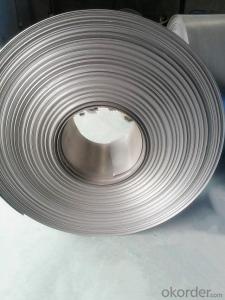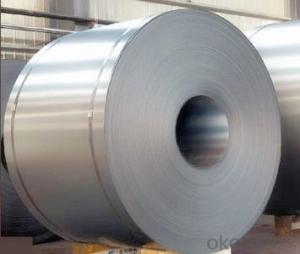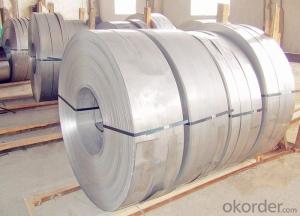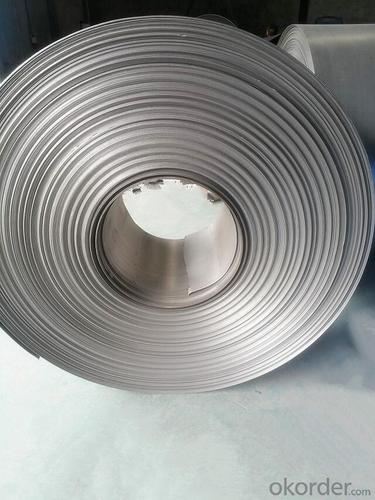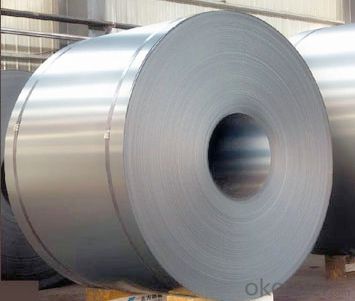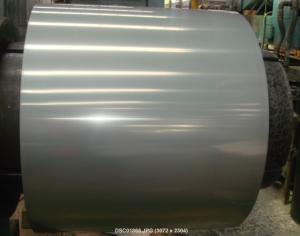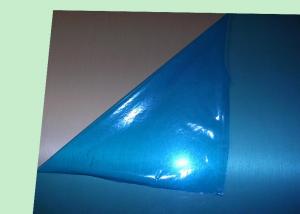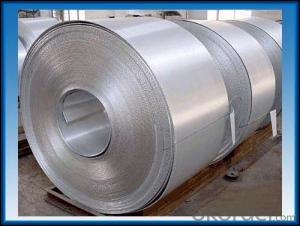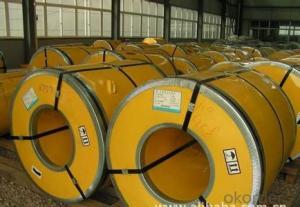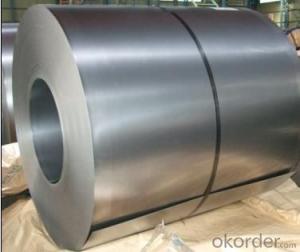201 SERIOUS HOT ROLLED STAINLESS STEEL COILS/SHEETS
- Loading Port:
- Guangzhou
- Payment Terms:
- TT OR LC
- Min Order Qty:
- 100 m.t.
- Supply Capability:
- 20000 m.t./month
OKorder Service Pledge
OKorder Financial Service
You Might Also Like
Quick Details
| Grade: | 2B | Standard: | JIS,AISI,GB | Length: | as customers' requested |
| Thickness: | 2.5mm;3.0mm;4.0mm or as required | Width: | 485mm,510mm,600mm or as required | Place of Origin: | Shanxi China (Mainland) |
| Brand Name: | CMAX | Model Number: | 201 | Type: | Coil |
| Application: | Decoration,Boiler Plate,Chemical Industry,Container plate,ship | Certification: | SGS,ISO | Color: | natural color |
| Available Finish: | 2B/BA/8K/No.4/SB/HL | Edge: | slit edge and mill edge | Features: | accurate dimensions |
| Manufacture technology: | cold drawn,pickling, hot rolled and cold rolled | DDQ: | slivery bright surface | Quality: | high quality Hot rolled stainless steel coil 201 |
| Stock: | Always in stock | Item: | Hot rolled stainless steel coil 201 |
Packaging & Delivery
| Packaging Detail: | Standard export packing or as customer's requirement Hot rolled stainless steel coil 201 |
| Delivery Detail: | In 15 days |
Specifications
Hot rolled stainless steel coil 201
Width:485mm,510mm,600mm or as required
Thickness: 2.5mm;3.0mm;4.0mm or as required
Product Description
Stainless steel coil; stainless steel cold rolled coil;201 stainless steel coil; stainless steel coil
A. stainless steel coil
B. with competitive prices and fast delivery
C. High quality
Tisco 201 stainless steel coil
Thickness: 2.5mm;3.0mm;4.0mm or as required
Width: 485mm,510mm,600mm or as required
Length: As required
Material:201
201 stainless steel coil chemical composition
201 stainless steel coil | ||||||||
Grade | Chemical composition | |||||||
C | Si | Mn | P | S | Ni | N | Cr | |
% | % | % | % | % | % | % | % | |
201 | ≤0.15 | ≤0.75 | 5.5~7.50 | ≤0.060 | ≤0.030 | 3.50~5.50 | ≤0.25 | 16.00-18.00 |
201 stainless steel coil physical property
Physical Property | ||||
density | Strength of extension | yield strength | elongation | modulus of elasticity |
g/cm³ | psi | psi | % | psi |
7.93 | 100000-180000 | 50000-15000 | 55-60 | 29000000 |
Item | 201 stainless steel coil |
Technical | Hot rolled and cold rolled |
Standard | ASTM A240,GB/T3280-2007,JIS4304-2005,ASTM A167,EN10088-2-2005,GB/T3280-2007,EN10095-99,JIS4312,etc |
Material | 201,202,304,304L,309S,310S,316,316L,316Ti,430 |
Surface | NO.1,2b,4K,8k,HL,mirror finish |
Thickness | 0.3-100mm |
Width | 500-2000mm |
Price term | FOB,CFR,CIF |
Application | Stainless steel coil applies to construction field, ships building industry, petroleum, chemical industries, war and electricity industries, food processing and medical industry, boiler heat exchanger, machinery and hardware fields. Stainless steel coil can be made according to the customer’s requirements. |
Contact | If you have any question, please feel free to contact me. |
- Q: What is the electrical conductivity of stainless steel strips?
- The electrical conductivity of stainless steel strips may vary depending on the specific type and composition of stainless steel. In general, stainless steel is not as conductive as metals such as copper or aluminum. This is mainly due to stainless steel's higher resistance to the flow of electric current. However, there are stainless steel alloys that have been specially formulated to improve electrical conductivity. These alloys often contain higher amounts of elements like nickel or copper, which enhance the material's conductivity. It is important to consider that factors like temperature, surface condition, and strip thickness can also affect the electrical conductivity of stainless steel. Therefore, it is recommended to refer to specific data or consult with manufacturers to obtain accurate information regarding the electrical conductivity of stainless steel strips.
- Q: Can stainless steel strips be cut to custom sizes?
- Yes, stainless steel strips can be cut to custom sizes.
- Q: What are the different types of surface finishes available for stainless steel strips?
- There are several different types of surface finishes available for stainless steel strips, each offering unique properties and aesthetic appeal. Some of the most common types include: 1. No. 1 Finish: This is a hot-rolled, annealed, and pickled finish that exhibits a rough and dull appearance. It is commonly used for applications where a rough texture is desired or for further processing. 2. No. 2B Finish: This finish is achieved by cold-rolling stainless steel strips and subsequently annealing them in a controlled atmosphere. It results in a smooth, reflective surface that is suitable for general applications requiring a bright and uniform appearance. 3. No. 2D Finish: Similar to the No. 2B finish, this surface finish is achieved by cold-rolling stainless steel strips and annealing them in a hydrogen atmosphere. It provides a slightly duller and less reflective surface compared to the No. 2B finish. 4. No. 3 Finish: Also known as a ground finish, it is achieved by mechanically polishing the surface of stainless steel strips using abrasive belts or brushes. This finish creates a semi-reflective appearance with a linear grain pattern. 5. No. 4 Finish: This is a popular finish for decorative applications, achieved through the use of polishing belts or brushes. It produces a brushed appearance with a consistent grain pattern, providing a satin-like finish. 6. No. 6 Finish: This is a high-gloss finish that is obtained through polishing stainless steel strips with successively finer abrasives. It offers a reflective and mirror-like appearance, making it suitable for decorative applications. 7. No. 7 Finish: Similar to the No. 6 finish, this is achieved by polishing stainless steel strips with successively finer abrasives. However, it is then buffed to create a highly reflective finish with enhanced clarity and depth. 8. No. 8 Finish: Often referred to as a mirror finish, this is the highest level of polish available for stainless steel strips. It is achieved through polishing with extremely fine abrasives, resulting in a flawless, highly reflective, and mirror-like surface. 9. Bead Blasting Finish: This finish is achieved by propelling small glass beads or steel shots at the surface of stainless steel strips. It creates a uniform matte appearance with a slightly rough texture. 10. Electropolished Finish: This is a specialized finish that involves the use of an electrolytic bath to remove a controlled amount of metal from the surface of stainless steel strips. It results in a smooth, bright, and clean finish with enhanced corrosion resistance. These various surface finishes offer a range of appearances and functional properties, allowing stainless steel strips to be utilized in a wide array of applications, from architectural and decorative to industrial and sanitary.
- Q: Can stainless steel strips be used in the production of marine equipment?
- Yes, stainless steel strips can be used in the production of marine equipment. Stainless steel is highly resistant to corrosion, making it an ideal choice for marine applications where exposure to saltwater and harsh environmental conditions is common. It provides durability, strength, and long-term reliability, making it suitable for various marine equipment such as boat fittings, marine hardware, and structural components.
- Q: What are the common uses of stainless steel strips in the chemical filtration industry?
- Stainless steel strips are commonly used in the chemical filtration industry for various purposes such as structural support in filter systems, as filtration media for removing impurities from liquids or gases, as components in filter elements, and as screens or sieves for separating particles of different sizes. Their corrosion resistance, durability, and high temperature resistance make them ideal for handling corrosive chemicals and maintaining the efficiency of filtration processes in the industry.
- Q: What are the different surface textures available for stainless steel strips?
- Different surface textures are available for stainless steel strips, depending on the desired aesthetic and functional needs. The following are some of the most common finishes: 1. No.1 Finish: This finish is achieved through hot rolling, annealing, and pickling, resulting in a rough and dull appearance. It is often used in industrial applications where appearance is not a primary concern. 2. No.2B Finish: This finish is obtained through cold rolling, annealing, and pickling, resulting in a smoother and more reflective surface compared to No.1 finish. It is commonly chosen for applications that require moderate corrosion resistance and a visually appealing look. 3. No.2D Finish: This finish is achieved through cold rolling, annealing, and pickling, resulting in a smoother but less reflective surface than No.2B finish. It is often used in applications that require a smooth surface but not high reflectivity. 4. No.3 Finish: This finish is achieved by using a 120-150 grit abrasive, resulting in a semi-polished surface. It offers a smoother and more reflective appearance than No.2D finish but is not as highly polished as No.4 finish. 5. No.4 Finish: This finish is achieved by using a 150-180 grit abrasive, creating a brushed or satin appearance. It provides a consistent and uniform brushed look, making it ideal for decorative applications that require an appealing finish. 6. No.6 Finish: This finish is achieved by using a 220-240 grit abrasive, resulting in a fine satin appearance. It offers a smooth and reflective surface and is commonly used in architectural and decorative applications. 7. No.8 Finish: This finish is achieved by using a 320-400 grit abrasive, providing a highly polished and mirror-like appearance. It is frequently chosen for decorative applications that require a high level of reflectivity. These finishes offer unique characteristics and benefits for stainless steel strips, catering to specific application requirements.
- Q: Can stainless steel strips be etched or engraved?
- Yes, stainless steel strips can be etched or engraved using various techniques such as chemical etching, laser engraving, or mechanical engraving.
- Q: What are the common thicknesses of stainless steel strips?
- The common thicknesses of stainless steel strips range from 0.025 inches to 0.1875 inches, depending on the specific application and industry requirements.
- Q: What are the main properties of 111 stainless steel strips?
- 111 stainless steel strips are known for their high corrosion resistance, excellent mechanical properties, and good formability. These strips are made from austenitic stainless steel, which contains high levels of chromium and nickel. The abundance of chromium ensures superior resistance to corrosion, making it suitable for various applications in industries such as automotive, aerospace, and construction. Furthermore, 111 stainless steel strips possess outstanding mechanical properties, including high tensile strength and good impact resistance. This makes them perfect for applications that require strength and durability. Additionally, they exhibit remarkable formability, allowing for easy shaping and fabrication into desired forms or components. In conclusion, 111 stainless steel strips offer a combination of corrosion resistance, mechanical strength, and formability, making them versatile and widely used in various industries.
- Q: What are the common thickness and width combinations for stainless steel strips?
- Depending on the specific applications and industry requirements, the common thickness and width combinations for stainless steel strips can vary. However, there are some standard thickness and width combinations that are frequently used. Thin stainless steel strips usually have a thickness ranging from 0.01mm to 3mm, and the width typically falls between 5mm and 500mm. These thin strips are commonly found in industries such as electronics, automotive, and medical. Medium thickness stainless steel strips, on the other hand, can have a thickness ranging from 3mm to 20mm, with a width that can vary between 100mm and 1500mm. These medium thickness strips are often utilized in applications such as construction, architecture, and machinery manufacturing. Thicker stainless steel strips, which are commonly used in heavy industries like oil and gas, petrochemical, and shipbuilding, can have a thickness exceeding 20mm and a width wider than 1500mm. It should be noted that these thickness and width combinations are not exhaustive and can be adjusted based on the specific requirements of each project. Manufacturers and suppliers of stainless steel strips are often able to customize the thickness and width according to the customer's needs and specifications.
Send your message to us
201 SERIOUS HOT ROLLED STAINLESS STEEL COILS/SHEETS
- Loading Port:
- Guangzhou
- Payment Terms:
- TT OR LC
- Min Order Qty:
- 100 m.t.
- Supply Capability:
- 20000 m.t./month
OKorder Service Pledge
OKorder Financial Service
Similar products
Hot products
Hot Searches
Related keywords
